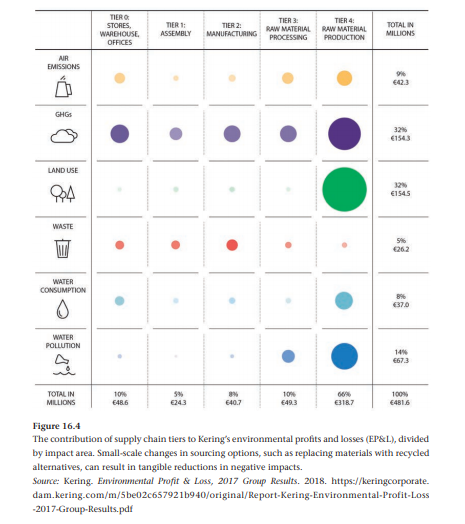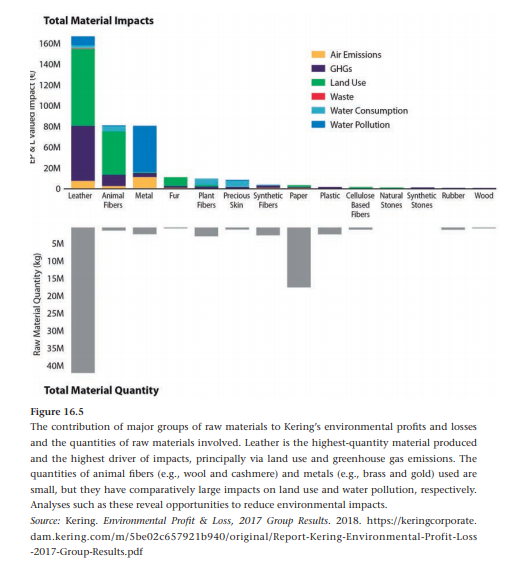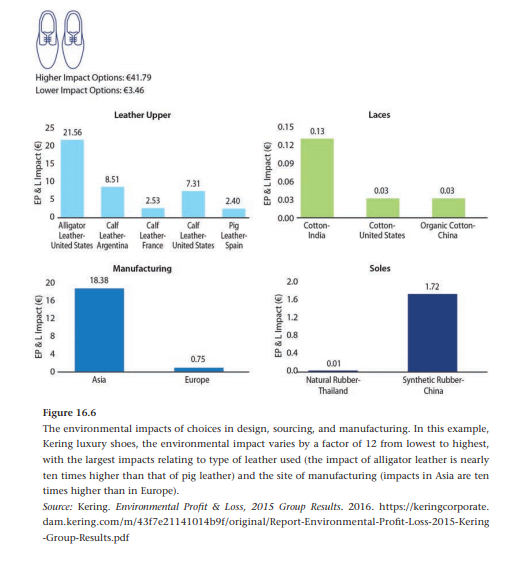Case Studies: Transforming Existing Business Models to Deliver on Planetary Health:
Case Study: Kering
Global luxury group uses advanced natural capital measurement, valuation, and management tools alongside active supply chain engagement to advance planetary health. Kering pioneered environmental profit and loss (EP&L) accounting, supported by professional services firm PwC UK, as an advanced business management tool that provides in-depth analysis of the environmental impacts of a company’s activities. The EP&L measures and values environmental impacts across Kering’s own operations and its entire international supply chain. By doing so it helps Kering to translate environmental impacts into a language business decision makers can readily understand, to compare between different types of impact and to elucidate differences in environmental performance between brands, business units, and locations.
As a result Kering is able to identify the most significant drivers of impact along its value chain and implement targeted projects to improve impacts (e.g., development of new manufacturing processes, innovations in material use, and new multistakeholder collaborations).
Figure 16.4 shows how Kering’s 2017 impacts are distributed along its value chain. The majority of Kering’s impacts are generated in its supply chain (90%), and in particular from the production and processing of raw materials, which together represent 76% of the total. Kering’s own operations represent only 10% of the impacts. With the knowledge gained from the EP&L Kering has shifted the focus of its sustainability efforts further upstream toward primary production and processing activities. Because the supply chain is made up of thousands of independent businesses, many of which serve multiple customers, Kering is also collaborating with its peers and across sectors in an effort to address environmental challenges.

Figure 16.5 shows the contribution of major groups of raw materials to Kering’s overall 2017 EP&L, as well as the volume of each material sourced across the group. Among the raw materials it uses, leather is the greatest driver of impacts, followed by animal fibers such as wool and cashmere and metals such as brass and gold. These last two material categories offer significant possibilities to drive impact reduction. Interventions such as replacing materials with recycled alternatives can reduce negative environmental impacts.

Figure 16.6 shows one example of how the information generated in the EP&L can be used to inform decisions about sourcing locations, material choice, and product design, as well as highlighting areas where interventions to reduce impacts may be most beneficial.

This case demonstrates the potential for innovative natural capital measurement and valuation to inform business decisions in support of planetary health goals.

